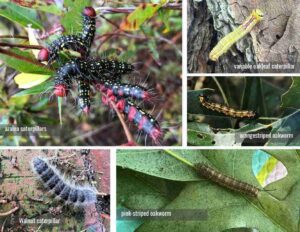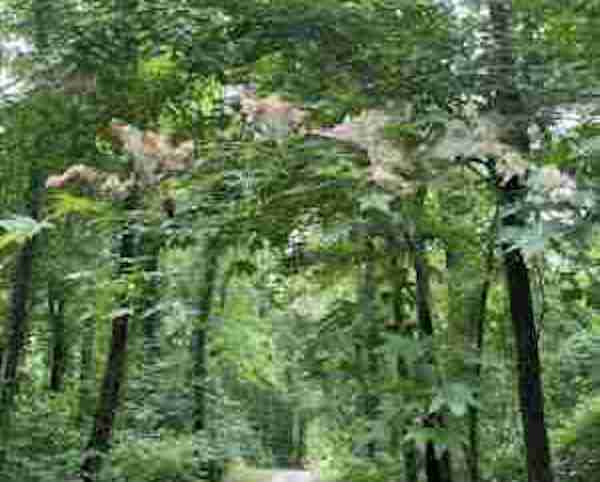Courtesy N.C. Forest Service
As we enter the dog days of summer, you may notice the lush green foliage of many trees and shrubs becoming marred by unsightly webs or seeming to have skipped over the bright reds and oranges of fall and have faded straight to brown, if not completely missing.
This transformation may be alarming, although the culprits behind much of these late season changes are oftentimes native insects such as the fall webworm (Hyphantria cunea), locust leafminer (Odontota dorsalis), larger elm leaf beetle (Monocesta coryli) and numerous species of caterpillars and sawfly larvae.
While it’s natural to want to protect our trees, it’s important to understand the broader ecological context before resorting to drastic measures, which can sometimes do more harm than good.
The Bigger Picture
Like many native insects, populations fluctuate depending on environmental conditions and natural cycles. It’s common for some of our most notorious native insects populations, such as oakworms and sawflies, to surge for a couple of years, causing significant defoliation before naturally returning to less damaging levels due to natural predators or less favorable environmental conditions.
Truth be told, our native trees have coexisted with these insects since the beginning of time. While the damage caused by these insects can be unsightly, even when the outbreaks are extensive, they seldom cause long-term damage or tree mortality.
For most mature trees, the best approach is often to simply observe and let nature take its course. The unnecessary use of chemical or mechanical control for the benefit of aesthetics can disrupt the natural balance and have unintended consequences by harming beneficial insects such as pollinators and natural predators that help manage the pest population.
When to Worry
That said, there are instances when intervention might be warranted. For young, newly planted trees, severe defoliation can weaken them and make them more susceptible to disease or secondary insect attacks. In these cases, intervening with insecticides or mechanical removal may be necessary.
While native insects generally pose minimal threat to native trees, the situation changes when they’re introduced to new environments. Fall webworm, a common late season defoliator of hardwoods in the Southeast is a prime example. The caterpillars, or larvae, feed in colonies, spinning silken nests over foliage as they develop. In the warmer climate of the Southeast, four generations annually are common.
Although the first generation begins feeding in early spring, the large, conspicuous webs typically become more noticeable by fall. Their primary host trees in the Southeast include pecan, persimmon, sourwood and black walnut.
In the 1940s, fall webworms were first detected in Hungary and have since spread across much of Europe and into parts of China and North Korea. Although they present a low threat to the health of host trees in the U.S., they have been documented feeding on over 600 plant species including row crops, ornamentals and fruit trees overseas. Their voracious appetite has classified them as a serious agricultural pest, significantly impacting crops and orchards across Europe and Asia.
To learn more about the insects mentioned in this article, visit: https://www.ncforestservice.gov/forest_health/forest_health_handbook.htm








